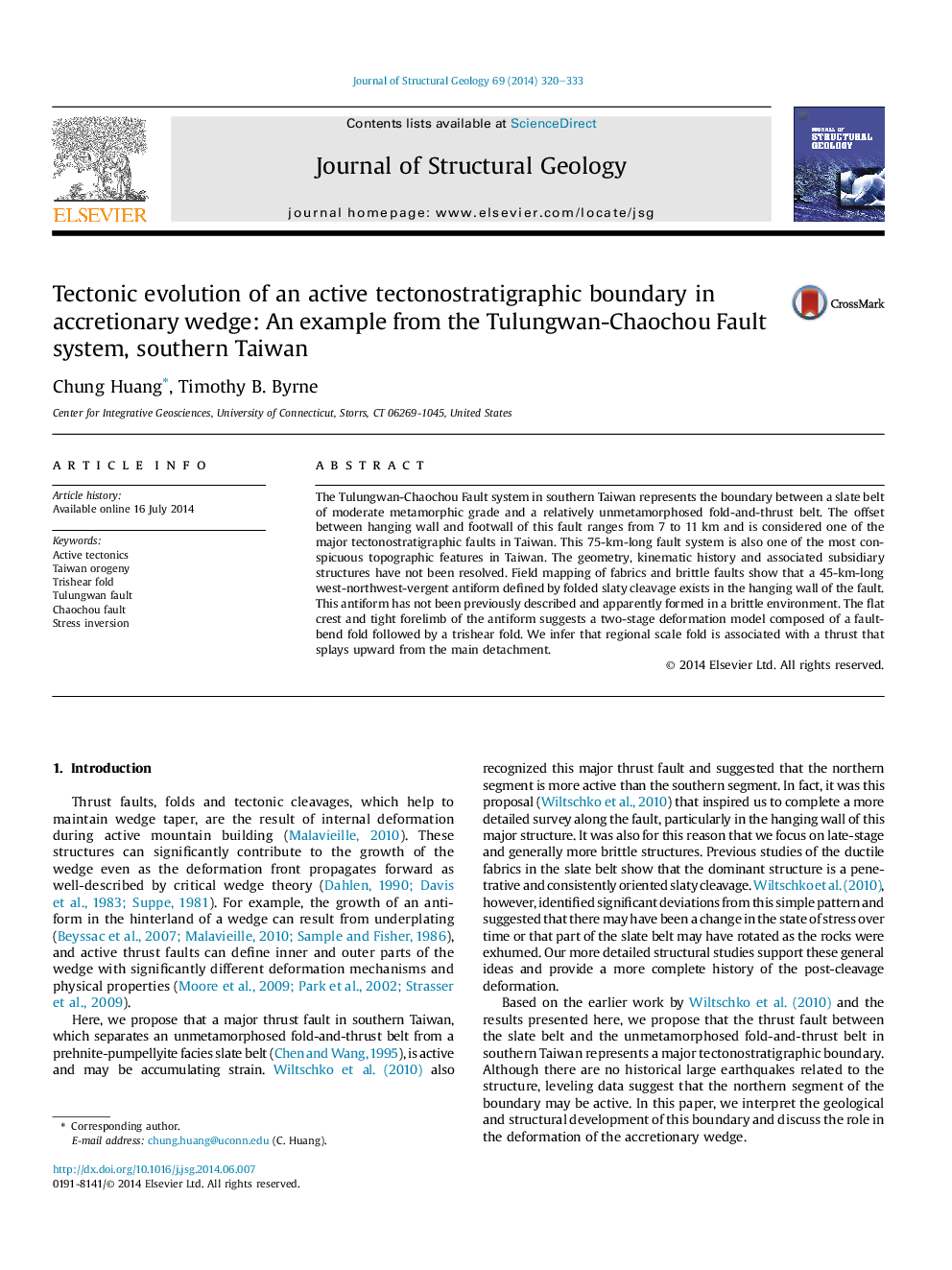| Article ID | Journal | Published Year | Pages | File Type |
|---|---|---|---|---|
| 6444912 | Journal of Structural Geology | 2014 | 14 Pages |
Abstract
The Tulungwan-Chaochou Fault system in southern Taiwan represents the boundary between a slate belt of moderate metamorphic grade and a relatively unmetamorphosed fold-and-thrust belt. The offset between hanging wall and footwall of this fault ranges from 7 to 11Â km and is considered one of the major tectonostratigraphic faults in Taiwan. This 75-km-long fault system is also one of the most conspicuous topographic features in Taiwan. The geometry, kinematic history and associated subsidiary structures have not been resolved. Field mapping of fabrics and brittle faults show that a 45-km-long west-northwest-vergent antiform defined by folded slaty cleavage exists in the hanging wall of the fault. This antiform has not been previously described and apparently formed in a brittle environment. The flat crest and tight forelimb of the antiform suggests a two-stage deformation model composed of a fault-bend fold followed by a trishear fold. We infer that regional scale fold is associated with a thrust that splays upward from the main detachment.
Related Topics
Physical Sciences and Engineering
Earth and Planetary Sciences
Geology
Authors
Chung Huang, Timothy B. Byrne,
